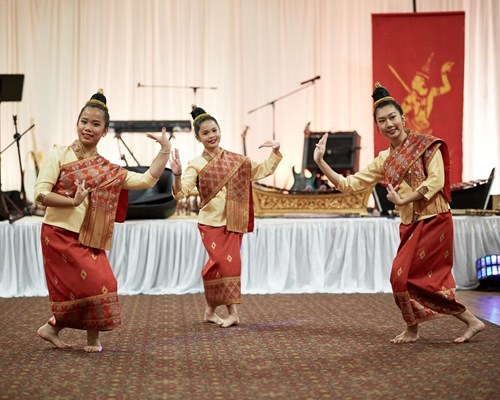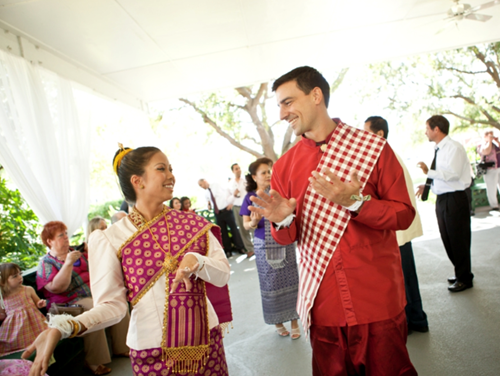With its enchanting temples, natural landscapes, and quiet village life, Laos is a mystical land where time stands still. We propose you to celebrate its culture through the Lam Vong, the national dance of the country. A quintessence of Laotian history, this folk dance reflects the bountiful traditions that define this exceptional nation.

Laos has a vibrant heritage, with performing arts shaping the cornerstone of its customs. Its folkloric tradition, in particular, involves dances from various regions. Lam Vong, which means “Circle Dance,” is one of the most popular folk dances in the country.
The Features of Lam Vong

The Lam Vong is a slow revolving circle dance with men on the outside and women on the inside cheering together with graceful hand movements and simple footsteps.
The beautiful arm and hand gestures are combined harmoniously with rhythmic musical instruments like a Khaen, a bamboo flute, and Saw, a traditional fiddle.
With the diverse ethnic groups of the country, the dance has different choreographic styles, reflecting the richness of the Laotian culture.
Dance Composition


The Lam Vong is an elegant dance where the performers are courteous with their partners. Before the dance starts, there is a formal greeting where the man and woman bow with their hands joined together to express respect for each other.
Throughout the performance, the partners maintain a mannered distance, where there is no physical contact. The choreography consists of cycles of eight movements, which are repeated based on the length of the music.
Cultural Significance
This folk dance is present in all the provinces of Laos. It has become a form of entertainment at social gatherings, telling its foundational stories and emphasizing the nationalistic pride of the country.


It is usually performed during the Lao New Year and on several special occasions such as weddings, festivals, ceremonies, or guest welcoming. In the countryside, people typically dance the Lam Vong after a finished harvest to express their delight.
The Lam Vong is a traditional dance, passed down from generations, allowing Laotians to preserve its vibrant heritage. Every visitor will surely be captivated by this beautiful and authentic Lao art.



